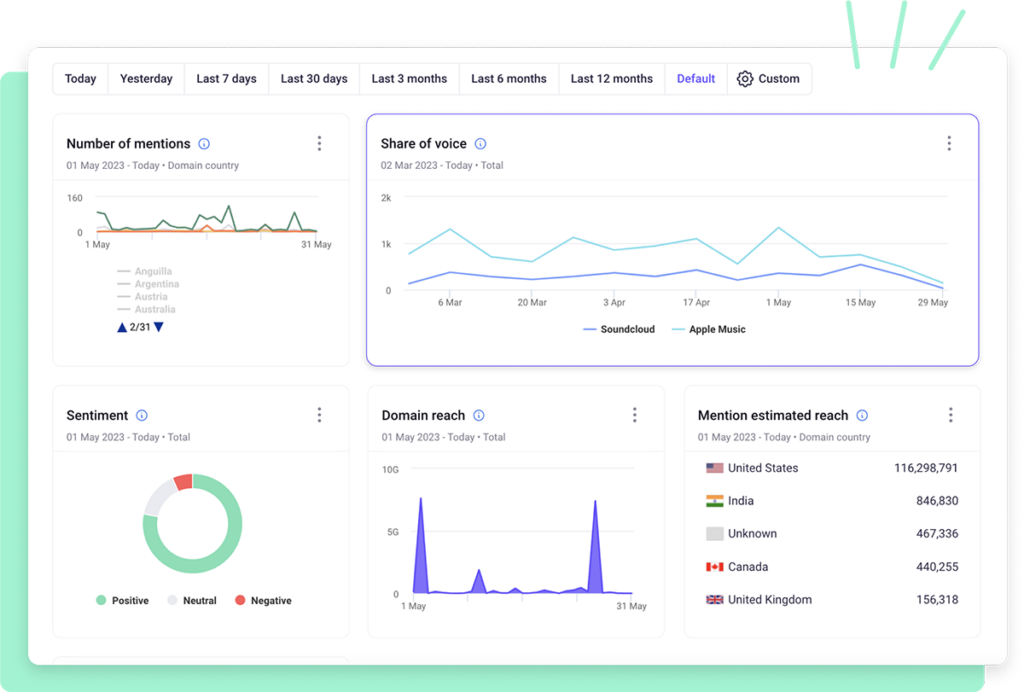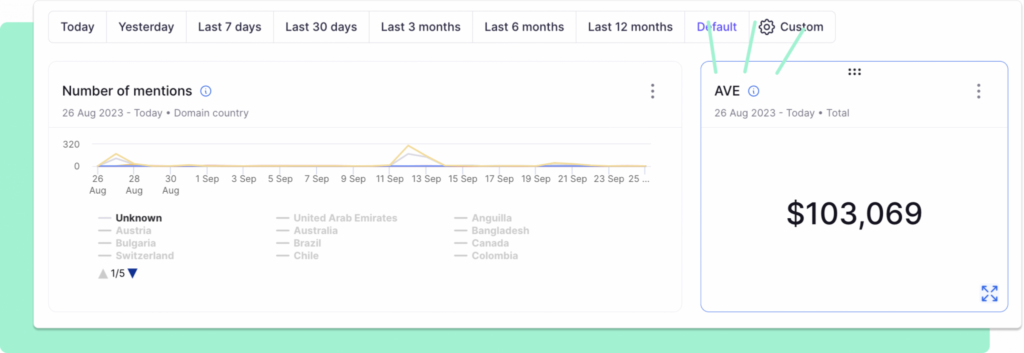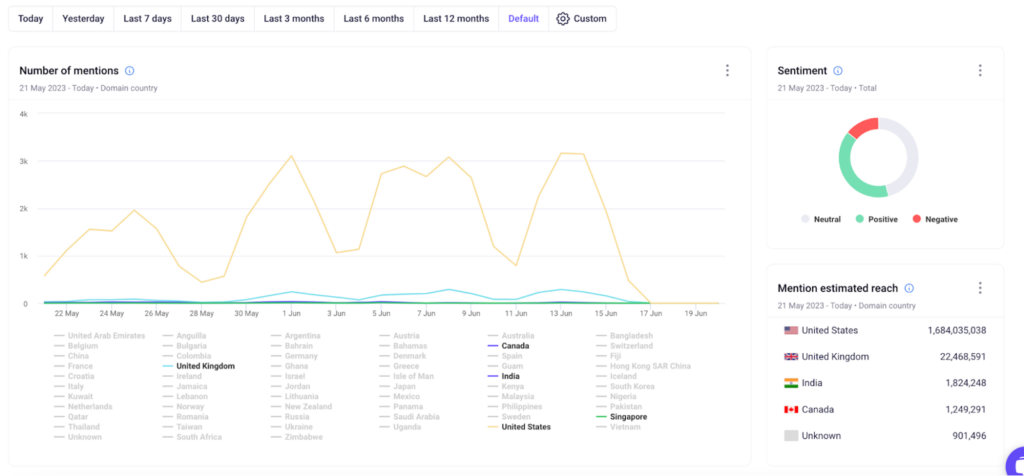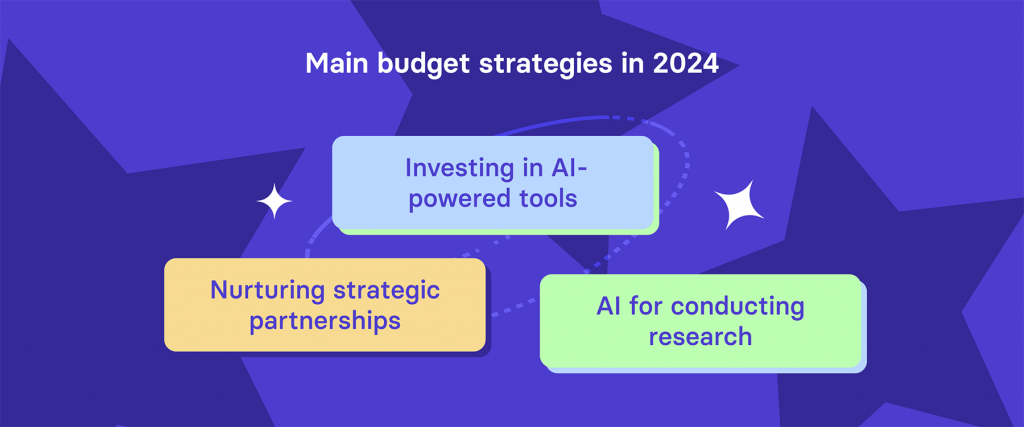You can't improve on what you don't measure. In public relations, it's easy to get sidetracked and claim that a press release received extensive media coverage. However, facts and figures are crucial for any PR strategy—whether you're working in a PR agency or as part of an in-house PR team.
Adopting a data-driven PR strategy benefits all stakeholders involved in the PR process, from company leadership to investors, colleagues, and individual contributors.
When your PR strategy is based on reliable metrics, everyone can better appreciate its impact and recognize the value PR brings to the business.
With tools like Prowly, tracking and measuring your PR efforts across websites, media outlets, and social media platforms becomes quick and easy.
Try Prowly's media monitoring free for 7 days
Start tracking your brand and keywords for free (no credit card required) in Prowly.
- Comprehensive monitoring: Track the web and social media mentions.
- Transparent pricing: Plans start at $258/month
- All-in-one platform: Get everything you need in one tool for PR, incl. media database, outreach, reporting, and more
What is a PR Strategy?
A PR strategy or a public relations strategy is a detailed plan for sharing information between an individual or an organization and the wider public. It requires many skill sets, such as being able to craft attractive messages, choosing the best channels for distribution, researching your target audience, and finding the best ways to influence their thoughts and attitudes.
What does data-driven PR strategy mean?
A comprehensive PR strategy is always data-driven, but there is more to this expression than meets the eye. Here are the key moments when your public relations strategy should become more focused on hard data.
1. While creating your PR strategy
The average business always has some sort of goal in mind with their press releases and public relations specialists. For example:
- increasing share of voice
- improving brand recognition and sentiment
- growing the number of conversions on social media
Before creating a public relations strategy, talk to your client or stakeholders to determine their KPIs for success. Then, use this data to set goals for your public relations campaign.
If you're struggling to choose the right goals for your PR efforts, you can get some help. Take a look at the previous public relations campaigns of that client or business first. Then analyze their audience data - who they are, what media outlets they follow, which PR tactic worked best for them in the past.
You can also analyze the current trends in the industry and niche with software like Prowly. For example, sentiment analysis will tell you how an audience feels about a certain topic over time.

Then you should tap into customer reviews of their product or service, as well as do a competitor analysis to see how they fare in terms of PR efforts against their biggest competition. Finally, analyze the ROI and the revenue of previous PR campaigns.
With Prowly, you can get access to all of these metrics from a single dashboard - and become fully data-driven before creating a single part of your PR strategy.
2. When you execute your PR strategy
At this point, you should have access to the most relevant KPIs of your client's PR efforts. Once your public relations strategy launches, you should start tracking your metrics to see your effects on your target audience.
Prowly can help you measure brand mentions, their sentiment, frequency, the countries they come from, the most prominent social media platforms, and more.
It's important to note that different sets of PR metrics apply to different types of strategies. For example, if your main aim is to improve your share of voice, you'll be tracking your mentions compared to your competition.
Once your PR strategy is up and running, data helps you sort out what works and what doesn’t early on. That way, you can double down on what is giving you the best results, and drop the PR tactics that are not pulling their weight.
With Prowly, you can get access to these key metrics in real time. Build a comprehensive PR strategy and follow it every step of the way.

3. During PR strategy reporting and evaluation
Having a data-driven public relations strategy helps when creating PR reports for your clients and assessing the effectiveness of your PR strategy and campaigns. Reports help relevant stakeholders understand:
- Media outlets and media channels used
- PR tactics leveraged
- Content that best resonated with the target audience
- Drivers of media coverage and sales conversions
With Prowly, you can do your PR reporting on autopilot - just create your dashboard once and it will be updated automatically with the most up-to-date PR campaign metrics. We wrote a handy guide on how you can do this, step by step.
Why data-driven PR strategy is so important
Becoming more data-driven helps PR professionals create more effective public relations strategies. But it's more than that - it builds your reputation as an agency or in-house professional.
Here are some of the benefits for PR professionals who want to guide their work with data:
- It helps you win a seat at the table. You can prove the immediate ROI of every PR strategy, helping you win more clients or bigger budgets with your existing ones.
- You build a track record of successful campaigns. For example, you can get solid proof that press releases work for a particular industry, while community and industry events don't.
- You get proof that your PR tactics helped achieve the client's goals. You and the client set your KPIs together and introducing data helps you prove that you crushed your goals.
How to create a data-driven PR strategy in 2025
We’ve probably convinced you that being guided by data is a huge advantage for effective public relations strategies. Here is how you too can become data-driven in your media relations efforts:
#1. Set your goals
The client may have an idea of their KPIs, but if they don't, it is your job to help them. For example, you might aim to increase the number of your brand mentions by 30% in one quarter.
#2. Identify your target audience
Describe your target audience, as well as the channels and media outlets needed to reach them. For example, reaching out to a generation of millennials through Instagram and Twitter.
#3. Formulate a clear mission and vision
Such as to establish the client's brand as the more sustainable alternative to competitors in the market.
#4. Measure the success of your public relations strategy
How do you know if a PR strategy is working? It depends on the client you're working for and the goals you set for their public relations strategy. Media professionals can use different sets of metrics and below you can find some of the most common:
Share of voice (SOV): the number of organic, unpaid mentions across websites, social media outlets, and various other platforms. Bear in mind that SOV in a PR strategy is different from the same metric in PPC marketing.

Advertising value equivalency (AVE): almost every public relations strategy has used this metric in the past, but it is now fairly outdated. It measures the value of a PR mention by comparing it to an equivalent advertisement. For example, how much an organic mention in social media channels would be worth compared to a PPC ad.

Unique visitors per month (UVPM): how many unique visitors reached your website during a given time period, usually a month. While this does have some value, it is not as relevant as most other PR metrics today.
Brand mentions: how many mentions of your brand you were able to earn for your client through your PR strategy? It is a pretty good measure of media coverage over your target audience. But bear in mind that besides the number of mentions, you should also track their sentiment and sources.
Media mentions: similar, but not the same as brand mentions. For example, someone mentioning Slack is not the same as someone mentioning communication software. Media mentions are crucial for every PR strategy, as they help you uncover who mentions your industry target terms and in what context.
Brand sentiment: for each mention that comes in (whether it's branded or some other term), there are three possible sentiments: positive, neutral and negative. PR tools such as Prowly track the sentiment of your mentions by default, using advanced algorithms for sentiment analysis to tell you how your target audience feels when talking about a certain term.

Domain authority (DA): a commonly used metric in SEO circles. The bigger the DA of a website that mentions you, the more perceived value you get from that mention. However, this is not a super-relevant metric for the typical public relations strategy.
The number of backlinks: the number of backlinks to your website you were able to get from your PR strategy. Backlinks have an immediate impact on SEO and the more of them you have to your website, the easier it is to rank for your key target terms.
Media tiers: whether you are being mentioned in the right places and platforms. For example, if your main goal is to get media coverage from TikTok, this is the media tier you want to cover in your PR strategy. Or maybe you want to get media coverage on TV from your press releases - this is an entirely different tier.
💡Read more about measuring PR success here.
#5. Other useful PR metrics you may include
Besides the most important ones mentioned above, there are a few more metrics you can use for tracking the success of your public relations strategy.
These include:
- website traffic changes
- organic mentions in media outlets
- website bounce rate
- word-of-mouth mentions
- target audience sentiment analysis
- website conversion rates
- new customers
- improvements in keyword rankings
- subscriber growth for email marketing newsletters
- click-through rates through emails
- stakeholder satisfaction
#6. Create an elaborate action plan and a timeline
Determine the PR strategy that is going to take you to the KPIs set by your client and your agency or department. For example, you could choose press releases as your weapon of choice and increased social media engagement as a result, with heightened brand recognition in terms of a 50% improvement in brand sentiment.
This brings us to our second point: choose your channels for communication for your PR campaign. Determine where you're going to share your key messages and which social media channels make the most sense for your client.
Then, choose how your content will be distributed. You can boost brand awareness by sprinkling some PPC or influencer marketing into the mix. Or you can do traditional media outreach and hope it will be enough to get attention from the most important media channels for your client.
#7. Outline distribution or roles and responsibilities
For every PR campaign, you need a team of public relations experts. If you work in an agency, you already know who the expert is in different types of PR strategies, like social media public relations. When working with a client's in-house team, distribute roles according to the skill sets of the in-house team.
#8. Describe the allocation of the PR strategy budget
Every effective PR strategy costs money. Whether it's in promoting press releases, getting traction through social media posts, getting featured in local media outlets, or earning brand mentions through key messages online - it can get expensive. Determine what the media relations budget is and how much of it goes to each strategy.
Ideas for effective PR strategies in 2025
Want to jump into PR in 2025 but don't know where to get started with your public relations strategies? Here is some inspiration to get you going.
What to include in your 2025 PR strategies
Want to create better public relations? Start with some of these strategies.

Build strategic partnerships - In 2025, one-off connections are no longer meaningful. Instead of using a spray-and-pray approach, build relationships with the right media professionals. This not only saves time and money but also protects your brand identity and brand reputation.
Invest in AI-powered tools - Every good PR strategy of 2025 uses AI to some extent - not just for content creation, but in many other arenas too. For example, you can increase your chances of PR success by using AI to analyze follower sentiment and measure brand reputation online.
Last but not least, spend a good chunk of time on market research. Every good PR strategy is based on understanding who your target audience is and why they follow and purchase from a certain brand.
💡Read more about budget allocations and trends in our study.
What to exclude from your PR strategies
When creating PR strategies in 2025, there are certain things you want to drop if you want to protect your brand's reputation.

First off, most PR agencies know that Twitter or X is no longer necessary to meet your PR objectives. With more journalists (and users) leaving the platform, you can't hope for as much positive coverage from this platform as you once could.
Mass emails to journalists should also stop. You want to build and maintain positive relationships with journalists, not spam media representatives with packages of generic content that is not even personalized.
Speaking of which, your new PR strategy should not be based entirely on AI. AI-generated content is a poor way for public relations managers to build relationships with media professionals. Keep ahold of that human touch.
Influencer PR
Using influencers is one of the most effective public relations tactics of 2025 and beyond. They already have an engaged audience that trusts them with just the right incentive, any PR agency can use influencers to foster positive relationships with their key target audience.
And with a tool such as Prowly, you can create a solid PR strategy based on influencers. Across platforms like LinkedIn, Instagram, Facebook, TikTok, and YouTube, you can find who mentions certain accounts and in which sentiment. Our social media listening tools help you determine which influencers can get positive coverage for your client or brand.
What makes a good data-driven PR strategy?
A good data-driven PR strategy is all about choosing the right metrics and aligning with your client or stakeholders about the goals you want to achieve. Your goals should be SMART - Specific, Measurable, Achievable, and Time-bound.
Once your PR strategy is in motion and the work is done, analyze the results it achieved with your target audience and report your results to your clients. For more hands-on advice, check out our PR strategy templates.

